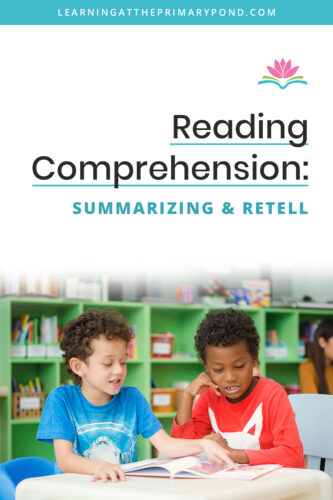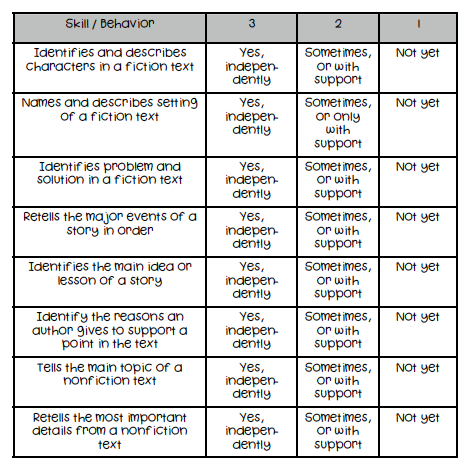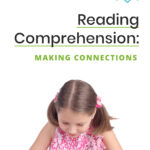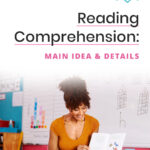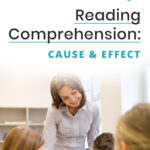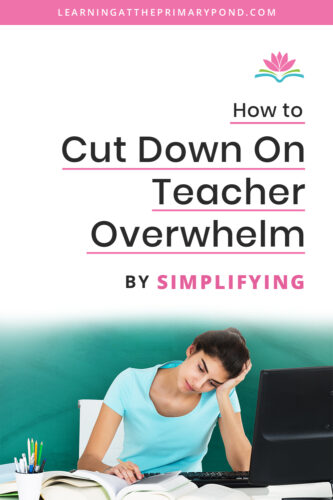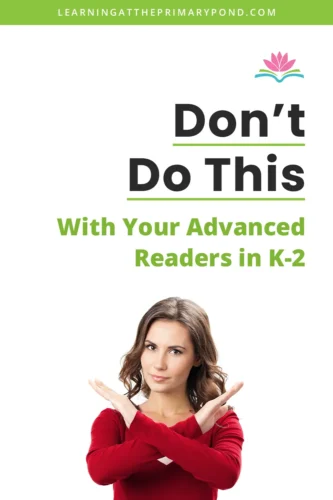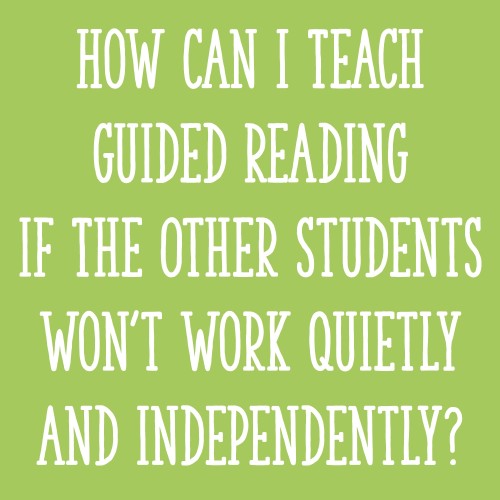Getting students in the habit of summarizing and retelling after reading a text is foundational in reading comprehension.
Having students retell helps clear up any misunderstandings (i.e incorrect plot line, confusing multiple characters) – and can then lead to some really valuable discussions!
In this post, I’ll explain the key differences between summarizing and retelling. I’ll also provide some structured routines and examples of how I’d teach and prompt for these skills!
**This post is part of a series on reading comprehension, so if you haven’t had a chance to check out the other posts, here they are:
Reading Comprehension: Making Connections
Reading Comprehension: Main Idea & Details
Reading Comprehension: Cause & Effect
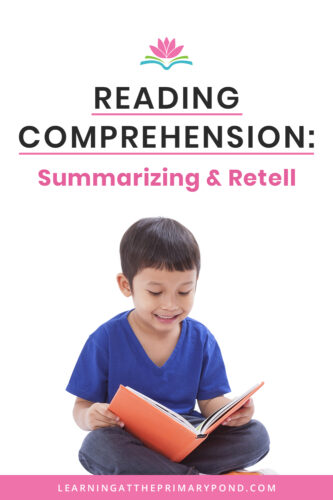
What Is the Difference Between Retelling and Summarizing?
Making the distinction between retelling and summarizing is important. Many teachers, and therefore students, interchange the two terms when, in fact, they mean different things.
Retelling is when students tell you about a text and include everything (details and some main ideas).
Summarizing is when students tell you about a text in a more concise manner (focusing more on just main ideas.)
Here’s an example of a retell using the story of The 3 Little Pigs:
- “In the story of ‘The Three Little Pigs,” a mother pig tells each of her three kid pigs to build a house for themselves. Each pig decides to build a house out of different materials. The first pig builds his house out of straw. The second pig builds his house out sticks. The third pig builds his house out of bricks. One day, a Big Bad Wolf comes. He wants to find the pigs and eat them. The Big Bad Wolf puts on a disguise and pretends to be a little old lady. He puts on a dress, hat, and glasses, and uses a different voice to cover up his own appearance. He knocks on the first door of the straw house and says ‘Little Pig, Little Pig, let me in!” But the first pig isn’t too sure and says ‘Not by the hair on my chinny chin chin.’ The wolf responds ‘Then I’ll huff and I’ll puff and I’ll blow your house in!’ He takes a big breath and blows the house down. Because it was built with straw, he can easily blow it down. The wolf gobbles up the first pig. Then the Big Bad Wolf moves on to the second house….”
If we were to go on, this level of page-by-page detail would continue throughout the entire retell.
Here’s an example of a summary using the same story:
- “In the story of ‘The Three Little Pigs,” the first pig builds his house of straw, the second pig builds his house of sticks, and the third pig builds his house with bricks. One day a Big Bad Wolf comes to eat the pigs. He can easily blow down the houses with straw and sticks, so the Big Bad Wolf eats those pigs. At the brick house, though, he can’t blow it down because material is too strong.“
For a retell, it’s important to not leave out any details. This includes characters and plot line.
With a summary, the student has to synthesize every detail in the story and express everything concisely – this means that perhaps only the main characters and plot highlights are mentioned. There’s more subjectivity, because the reader has to decide what details are most important.
How Can You Teach Retelling and Summarizing?
A child at any age can begin to learn how to retell a story.
Providing a summary, however, is a more complicated skill that won’t develop until later on (usually at least second grade).
So retelling instruction should come first!
Here are a few tips and activities:
- With a retell for Kindergarten students, start by having them go back to the beginning and turn page-by-page. They can mostly use the pictures to retell the story. This helps them focus on the actual retell vs. trying to decode words. Usually the books at this level have detailed enough pictures to make retelling easy! I encourage students to use character names, the setting, and simple sequence words (first, next, last) to retell the story.
- Once the texts are a bit more complex (like in 1st or 2nd grade), students should no longer be going page by page to retell. Depending upon how the text is set up, 1-2 retelling sentences can cover a few pages of text. Students should be weaving the problem and solution into the retell in a natural way.
- The use of an anchor chart or rubric can be really helpful to introduce to students. Here’s an example of a rubric from Unit 4 of my Reading Comprehension Lesson Plans for Kindergarten and First Grade! (Check out that resource if you’re looking for specific lesson plans to help teach retelling.)
- Once students are familiar with the rubric and what needs to be included, you might have them work with a partner. I assign partners ahead of time, and students know that when both partners have finished reading (i.e. during guided reading / small group), they take turns to retell the story. This also provides an activity for fast finishers so I can work with a struggling reader one-on-one! Eventually, I teach students how to give feedback to one another’s retell. (i.e. “You did a great job including all of the character’s names. Next time, tell me about the setting.”)
- A graphic organizer is a perfect tool to help students organize their thoughts! As texts become more complex, sometimes you’ll have students retell events out of order. Having a graphic organizer helps sequence the story from beginning –> middle –> end.
- When your students have become proficient in retelling, you can introduce summarizing. This will be a big shift for students! I like to explain that summarizing is kind of like the “movie trailer” version of retelling. Pretend as if the audience only has a short time to hear what the text is about. In doing this, students learn that not every single detail can be included. You could even tell students they only have a certain amount of time to help condense their thoughts. Including a graphic organizer that helps separate out “important details” from “interesting details” can be a helpful first step in this process of moving from retelling –> summarizing.
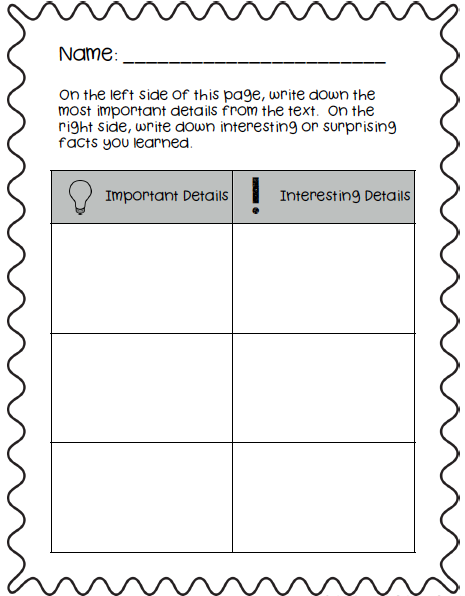
Here’s an example from “The Three Little Pigs:”
An example of an important detail is the material used for each type of house. This information is needed to explain the problem and solution.
On the other hand, an example of an interesting detail is that the pigs’ mother asked them to build houses. The audience doesn’t necessarily have to know this in order to understand the plot as a whole.
What Can You Do If Students Are Struggling to Retell and Summarize?
One mistake to avoid is waiting until the end of a text to have students retell or summarize.
Instead, provide chunks of text (a paragraph, couple of pages, a chapter at a time) so that students have multiple opportunities to stop and reflect back. They might retell to themselves or to a partner.
Another option is for students to use sticky notes to jot down ideas for a later retelling or summary.
If students are still having a difficult time on their own, prompting can help. Here are some prompts I’d use in either a whole group or small group setting:
For retelling:
- What happened first in the story? What happened next? What happened last?
- How did the story begin?
- What were the names of characters in the story?
- Where did the story take place?
- Was there anything going wrong for the characters in the story?
- How did the story end?
- Look at the picture. Tell me what’s happening in the picture.
- Reread this page. Then tell me what happened on that page.
If students are literally just rereading the story to you instead of retelling, the prompt I use is: - “Right now you’re reading the author’s words. I want you to tell me about the story in your own words.”
If needed, I have them physically close the text so they’re not tempted to use the author’s words verbatim.
For summarizing:
- Is that an important detail or an interesting detail?
- Tell me quickly what the text is about.
- So far, you’ve told me about the plot, but you haven’t mentioned any character names. Try telling me about the plot again, but mention the characters this time.
Conclusion
Retelling is one of the first ways we introduce reading comprehension to students.
This helps students understand that the purpose of reading is to make meaning: “You just read a text – awesome! But do you actually know what you just read?!”
Adding in the complexity of summarizing forces students to be picky about which information they choose to tell or write about.
As students grow more comfortable with the retell process, keep it interesting! Here’s another blog I wrote about 7 Ways to Practice Retelling That Won’t Put Your Students to Sleep!
Happy teaching!
